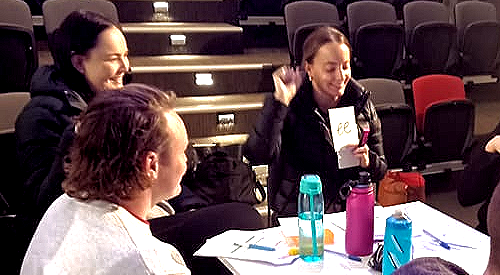Resources Alone Are Not Enough

The start of a new school year is an exciting time to be purchasing all sorts of new resources for reading instruction. Decodable texts, magnetic letters, whiteboards and new phonics programs are all high on the list of importance. It’s exciting to receive all of those shiny, new things in our classrooms. When these things are purchased, it feels good. We imagine that having them is going to make a difference to our teaching and our students. And it can. But it could also, just as easily, not. You see, it’s not just having the resources that makes the difference. It’s knowing what to do with them and where they fit in.
Here are four common mistakes that I hear about:
- Getting a new program or resource, but not letting any of the old stuff go. This happens when we get new decodables but keep the predictable texts as well. We think that by giving children access to decodables, all issues will be ‘fixed’. The challenge here is that predictables are designed to facilitate guessing from pictures and context and decodables are designed to help practice reading with phoneme/grapheme correspondences previously learned. They are complete opposites. The same goes for buying in a new program and keeping all the old ones. Trying to use 3 or 4 different programs, all with a different sequence and way of teaching creates a mess of instruction and reduces the effectiveness of all of it. Success loves clarity and sticking to one sequence and one way of doing things brings that clarity. As hard as it is to let go of something that you feel invested in, if it isn’t meeting your students’ needs, it’s time to say goodbye.

- Not knowing why you are using what you are using. It’s great to introduce decodables or a more explicit way to teach sentences, but if you don’t know why you are doing what you are doing, it is unlikely you will see the positive changes you are looking for. It is imperative that all members of a school community (classroom assistants and parents included) understand how fluent reading develops and what instructional practices are the most likely to result in the best learning for the largest number of children. When we understand that it’s knowledge of the alphabetic principle and strong phonemic skills coupled with many opportunities to read words that leads to orthographic mapping (words and patterns being transferred to long term memory), the decisions about instruction become much easier.

- Introducing evidence informed techniques but not altering assessment. Quality assessment allows us to measure the impact of our teaching. When there is a mismatch between practice and assessment, we cannot do that. It is a real missed opportunity to introduce high quality phonics and decoding instruction and then not have regular, whole cohort assessment that measures student growth and skill development.

- Providing tools but not building knowledge and skill. We all know that tools are only as effective as the teacher using them. Professional learning must accompany any newly introduced tool. This doesn’t always have to be a formal program or course, but does need to meet teachers where they are up to. You can’t create a shared vision without common understandings and common ways to teaching. When building knowledge and skill, keep things simple. Small, manageable chunks of content followed up by the opportunity to try out a technique, before coming together to evaluate and share feedback may be slower than attending a full day, in person training but it is more sustainable.

Resources are a necessary part of developing reading instruction in your school, but are not sufficient in an of themselves to create positive change. Knowledge, skills, purpose, shared vision and a sustainable path forward are needed to bring it all together and make sure that the introduction of new instructional techniques are more than a random act of improvement.

 Jocelyn Seamer Education
Jocelyn Seamer Education
0 comments
Leave a comment